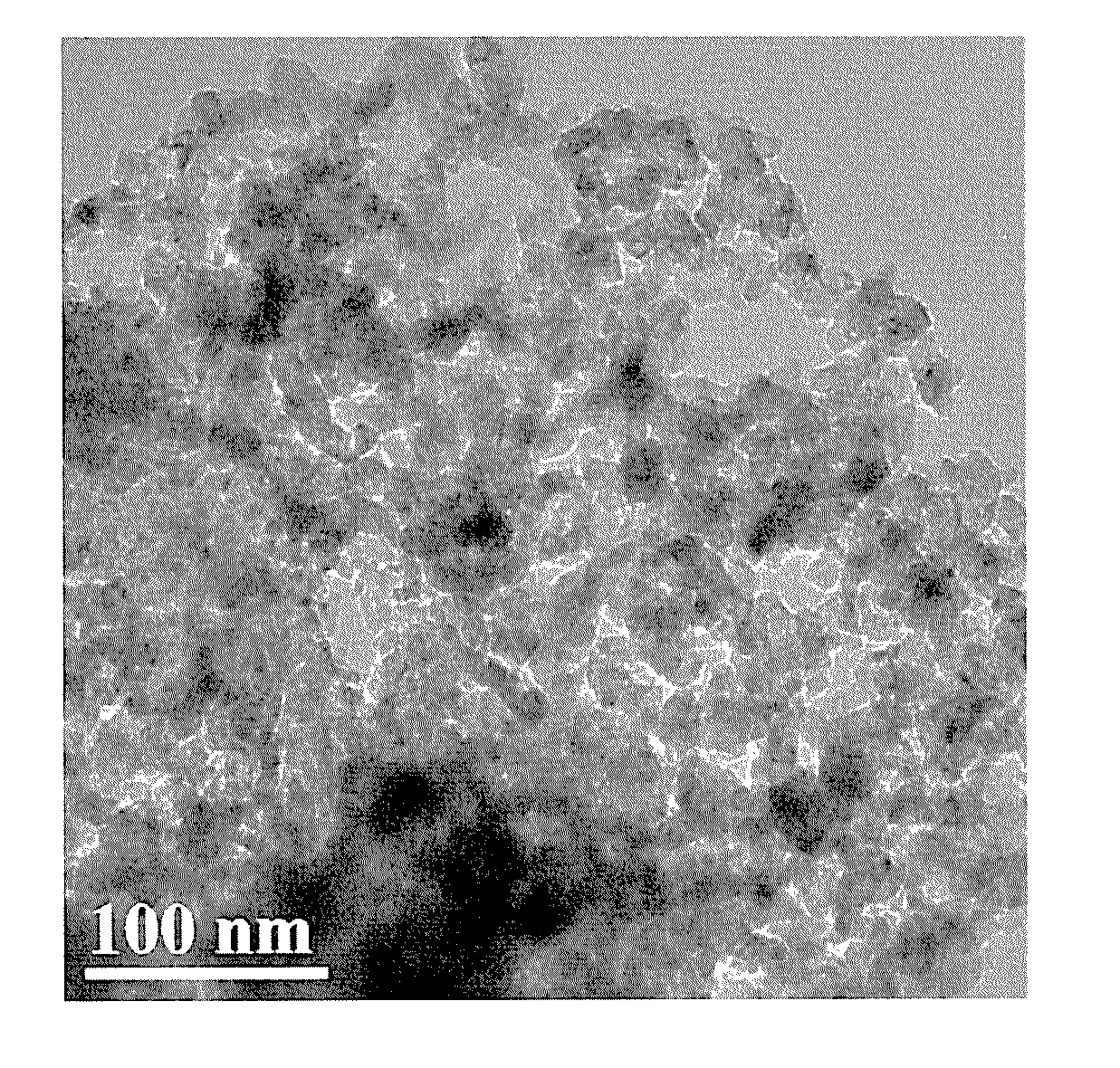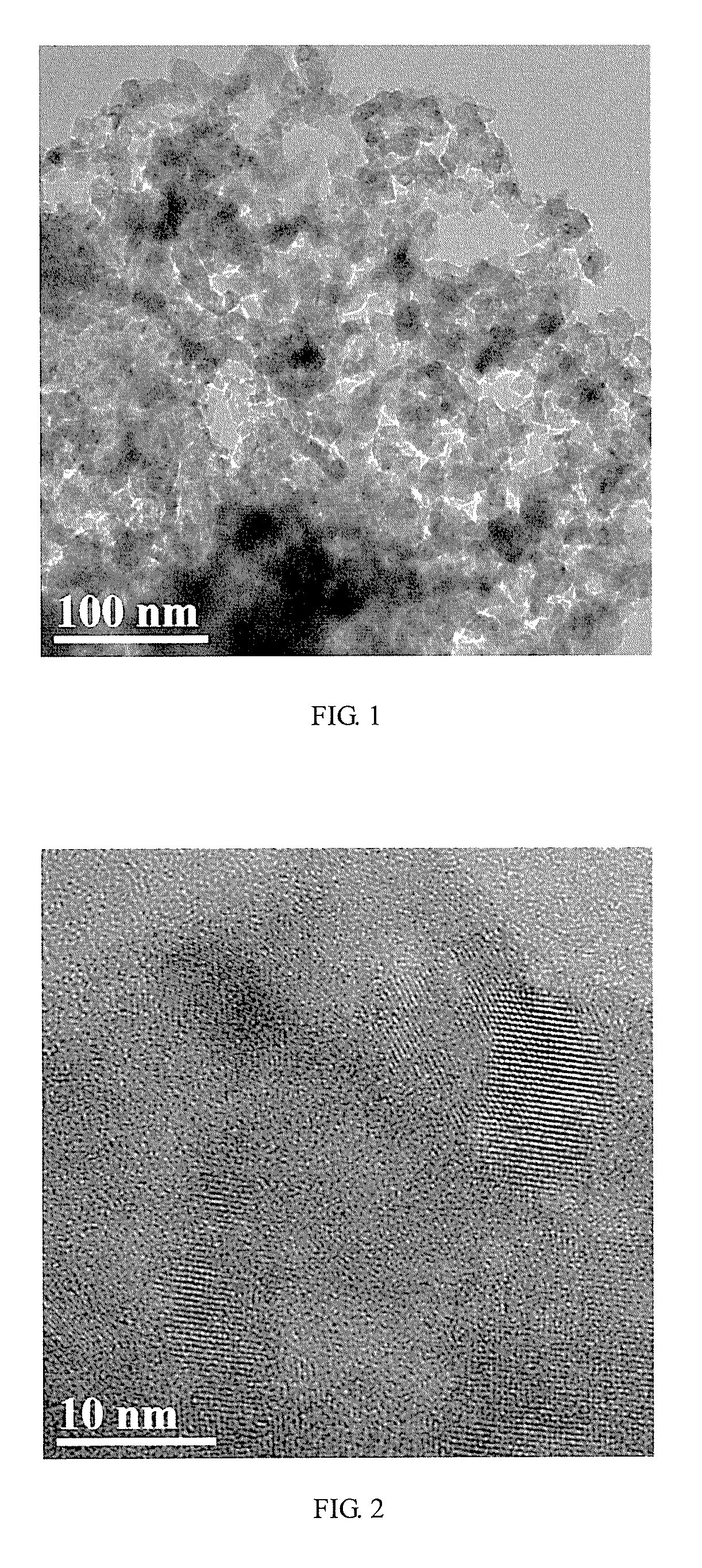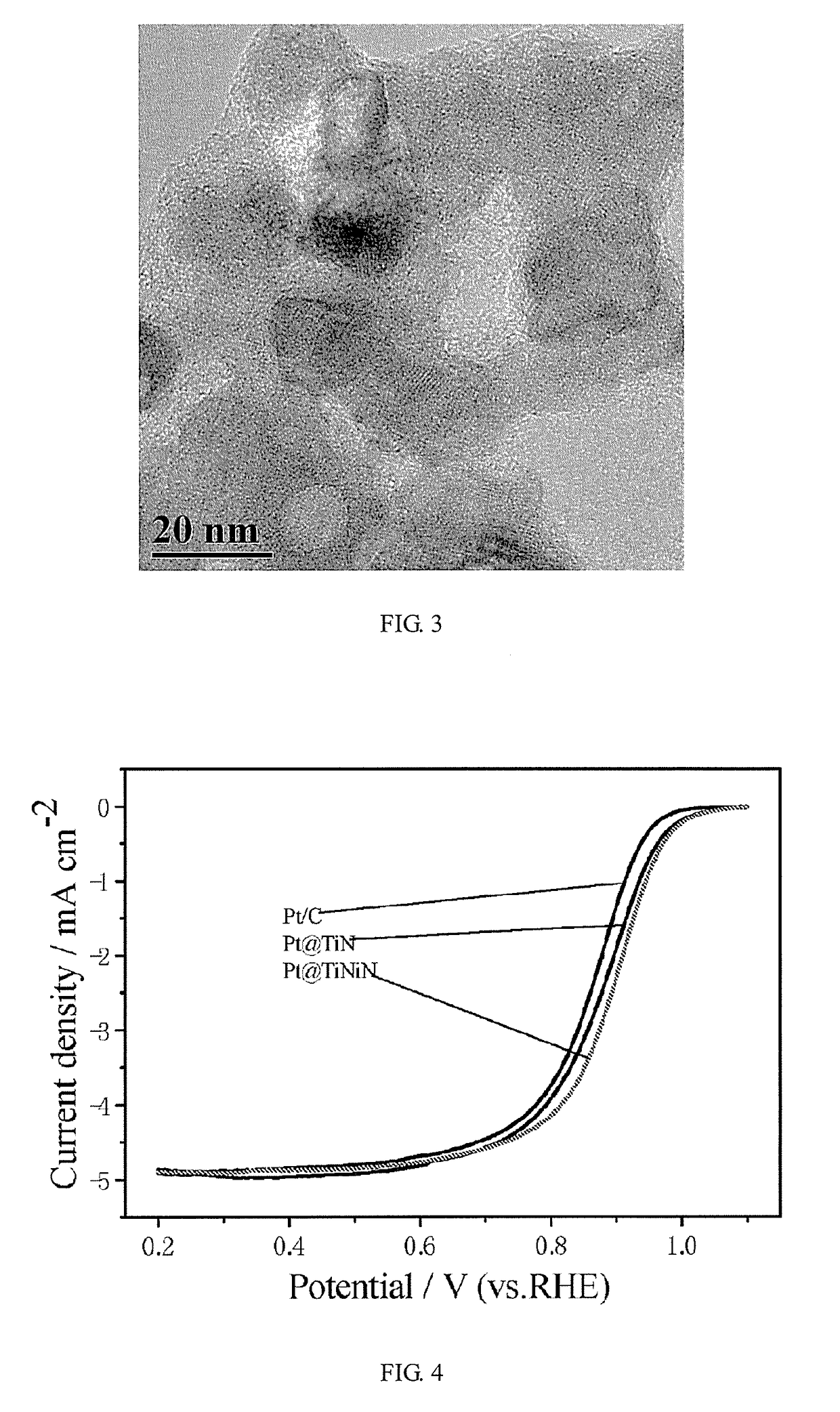Low-platinum catalyst based on nitride nanoparticles and preparation method thereof
a low-platinum catalyst and nanoparticle technology, applied in the field of fuel cells, can solve the problems of limiting the service life high cost of the fuel cell, and commercialization of the fuel, and achieves the effects of reducing the cost of the catalyst, improving the stability of electrochemical corrosion resistance, and high performance of the active componen
- Summary
- Abstract
- Description
- Claims
- Application Information
AI Technical Summary
Benefits of technology
Problems solved by technology
Method used
Image
Examples
embodiment 3
alyst
[0067]Except that cobaltous acetate tetrahydrate was used instead of nickel acetate tetrahydrate, the other preparation methods and testing methods were completely the same as those of Embodiment 2, and the oxygen reduction performance of the catalyst prepared in the present embodiment was 3.3 times that of the commercial Pt / C catalyst.
embodiment 4
alyst
[0068]Except that molybdenum pentachloride was used instead of nickel acetate tetrahydrate, the other preparation methods and testing methods were completely the same as those of Embodiment 2, and the oxygen reduction performance of the catalyst was 3.1 times that of the commercial Pt / C catalyst.
embodiment 5
Catalyst
[0069](1) Preparation of TiN / CNTs used as a substrate
[0070]In a fuming hood, 60 mL of ethanol was added into a Meng washing bottle, 1 mL of TiCl4 solution and 3.5 g of carbon nanotubes were added, and then they were stirred to be well blended. A carbon support accounted for 80% of a mass ratio of the substrate. Other processes were the same as Embodiment 1.
[0071](2) Pt@TiN / CNTs was prepared by the constant current pulse method: the same as Embodiment 1 except for several differences as follows:
[0072](A) the salt solution of the active metal (tetraammineplatinum chloride monohydrate, with a concentration of 5 mM, containing 0.1 M sodium sulfate and 0.125 M sodium citrate);
[0073](B) the pulse current was 10 mA / cm2, the turn-on time was 0.3 ms, and the turn-off time was 1.5 ms, and the oxygen reduction performance of the catalyst prepared in the present embodiment was 3.7 times that of the commercial Pt / C catalyst.
PUM
| Property | Measurement | Unit |
|---|---|---|
| temperature | aaaaa | aaaaa |
| diameter | aaaaa | aaaaa |
| temperature | aaaaa | aaaaa |
Abstract
Description
Claims
Application Information
 Login to View More
Login to View More - R&D
- Intellectual Property
- Life Sciences
- Materials
- Tech Scout
- Unparalleled Data Quality
- Higher Quality Content
- 60% Fewer Hallucinations
Browse by: Latest US Patents, China's latest patents, Technical Efficacy Thesaurus, Application Domain, Technology Topic, Popular Technical Reports.
© 2025 PatSnap. All rights reserved.Legal|Privacy policy|Modern Slavery Act Transparency Statement|Sitemap|About US| Contact US: help@patsnap.com



